
Fournier forgeries and forged cancels (taken from a 'Fournier Album of Philatelic Forgeries') with peculiar dot cancels, reduced sizes.
Return To Catalogue -
Persia 1868 issue, forgeries, part 1 -
Persia (Iran) 1868 issue
Note: on my website many of the
pictures can not be seen! They are of course present in the cd's;
contact me if you want to purchase them: evert@klaseboer.com.
More information about stamps from Persia, forgeries etc. can be found on: http://www.persi.com/fakes/fakes/fake.html, http://fuchs-online.com/iran/lions-03.htm or http://www.iranphilatelic.org/scams.htm. Also the book of Friedrich Schuller 'Die Persische Post und de Postwerthzeichen von Persien und Buchara' has much information.
For Persia 1868 issue, forgeries, part 1, click here.

Fournier forgeries and forged cancels (taken from a 'Fournier
Album of Philatelic Forgeries') with peculiar dot cancels,
reduced sizes.
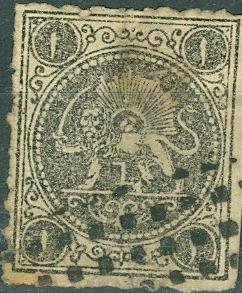
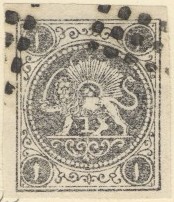
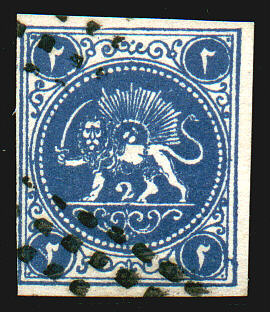
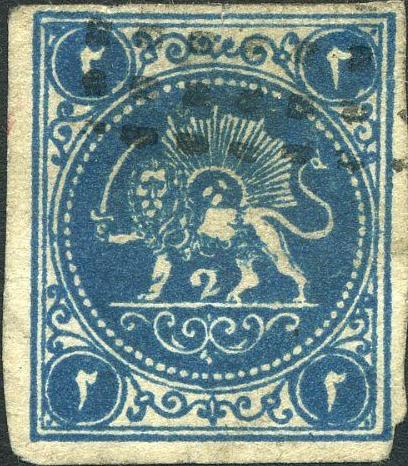


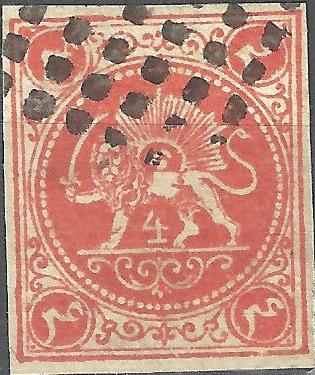
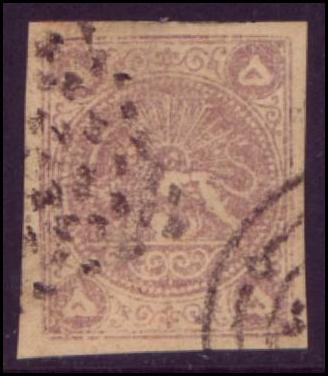
Possibly similar forgeries as those from the Fournier Album. The
'4' of the 4 ch is open on top (all genuine types are closed on
top)

Blocks of four of these forgeries.

Apparently the same forgery type; left Fournier (dot cancel),
right Spiro (typical Spiro cancel).
Spiro forgeries:

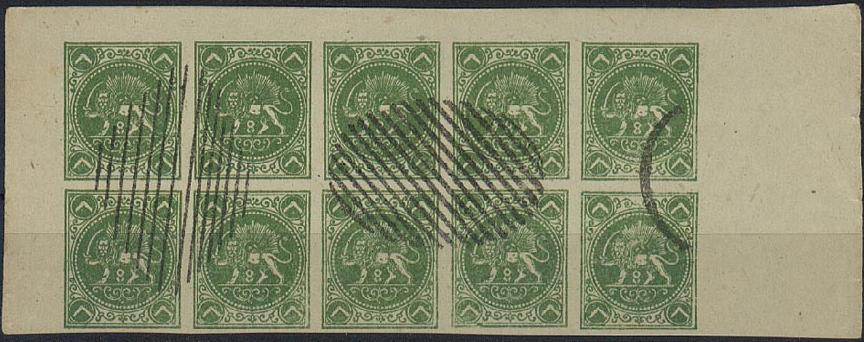
Some Spiro forgeries, note the strange cancels, reduced size.
These forgeries are different from the above shown Fournier
forgeries. The "4" and "8" are different.
Spiro forgeries have many different (bogus) cancels on the same sheet (see example above, they are also sometimes referred to as Hamburg forgeries). I have also seen the 1 c black and the 2 c blue of this particular Spiro forgery (with the same weird cancels and a cancel consisting of parallel lines). They are printed in sheets of 5x5 stamps.
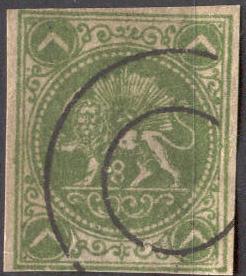
The 8 ch in the 'different type'.
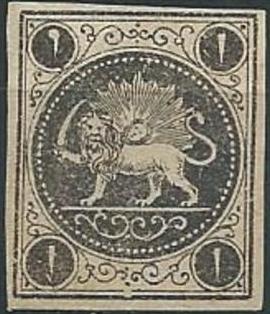



Forgeries one without and the others with 'bogus' cancels. They
are usually on yellow paper. According to the site http://commons.wikimedia.org/wiki/File:Iran_1868_Sc2_fake.jpg,
this forgery is lithograhed (instead of engraved), the lion's
nose is open on top and there is no color dot in the lion's tail.
Also note the white body of the lion.
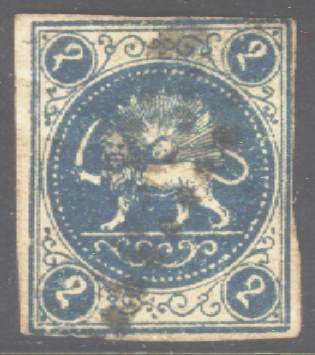
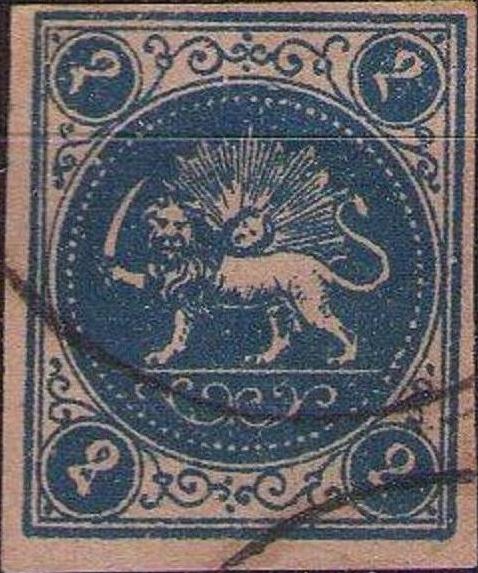
Forgery of the 4 ch blue value, but with '2's in the corners.
This is probably the forgery mentioned in the Serrane guide. It
might have been made by the same forger who made the above 2 ch
green stamps (which appear to be much more common than this
forgery)
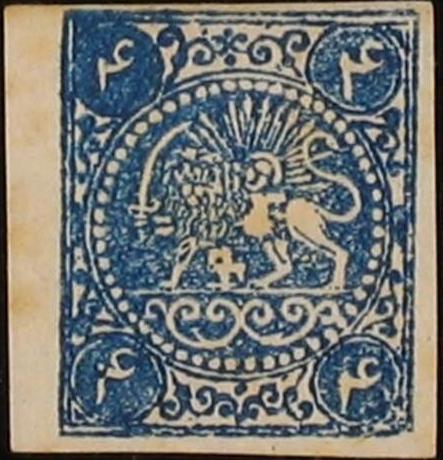

Two primitive forgeries of the 4 K blue and 4 K yellow. The '4'
is very fat. There are many other differences when compared to
genuine stamps.


Forgeries with '2' slanting backwards.
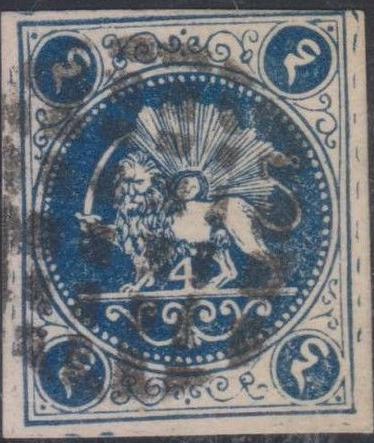
Forgery with double white line below the lion
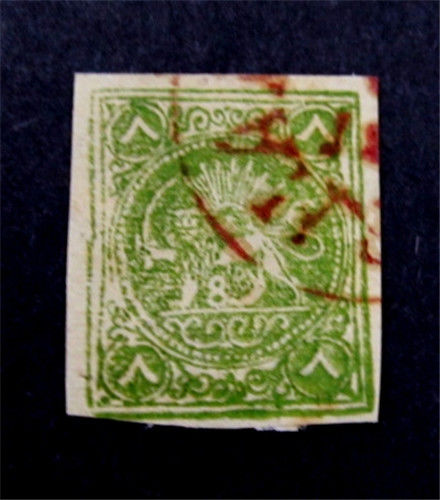
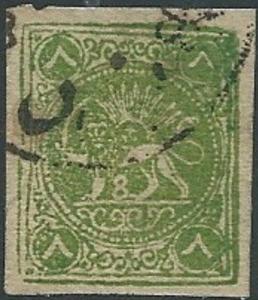
8 ch green forgery which does not correspond to any of the four
genuine types.
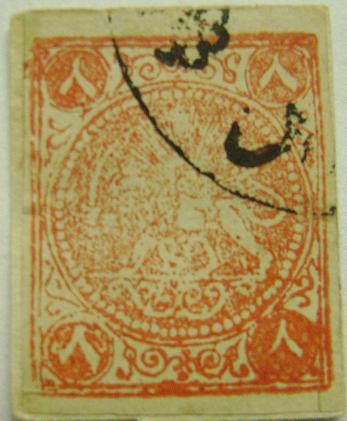
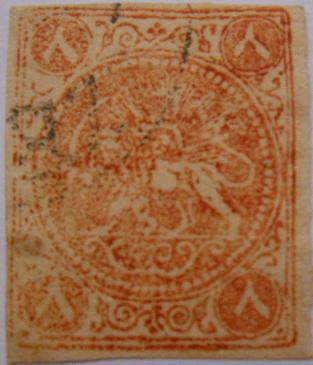
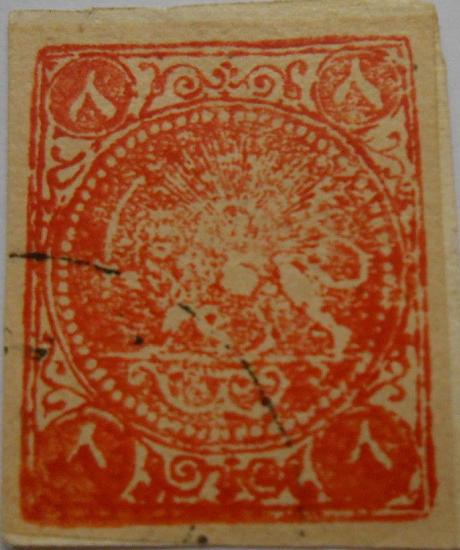
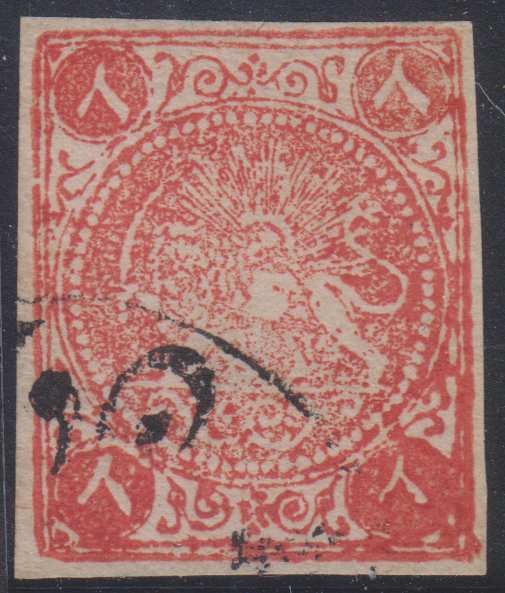
This 8 ch red forgery should not have an "8" between
the lion's legs.
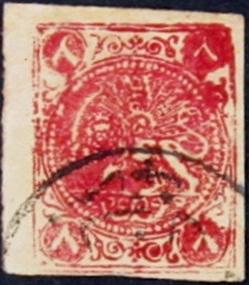
Is this the same forgery, but with the "8" erased?
Other dubious items:
All the next stamps have cancel 'YEZD * 3/6', they are probably all forgeries:
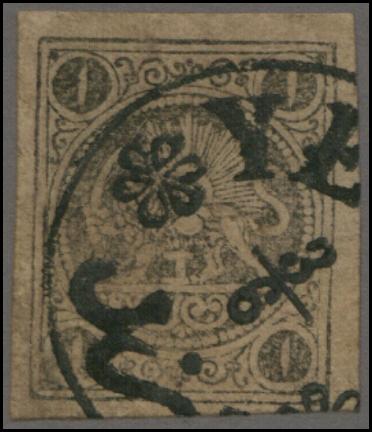
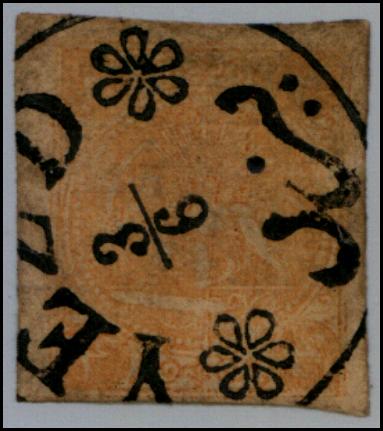
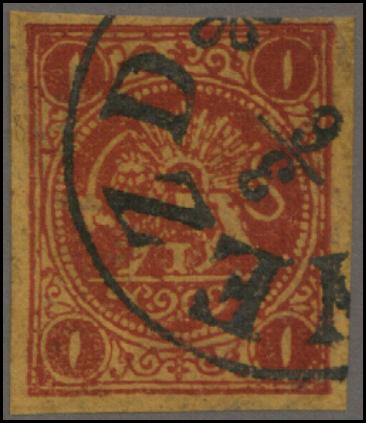
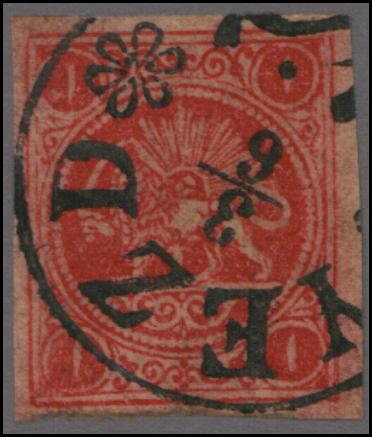
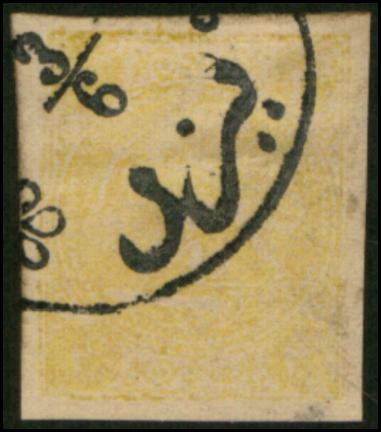
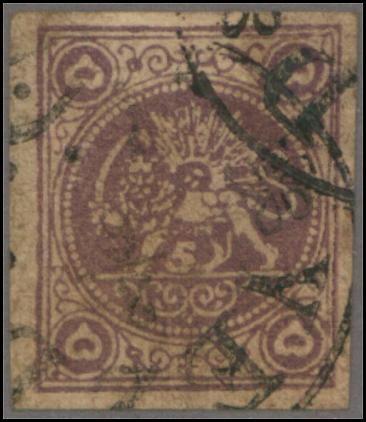

Note that this cancel also exists genuinely used. Note that the 5
K violet has a '5' between the legs of the lion (genuine stamps
don't have this).
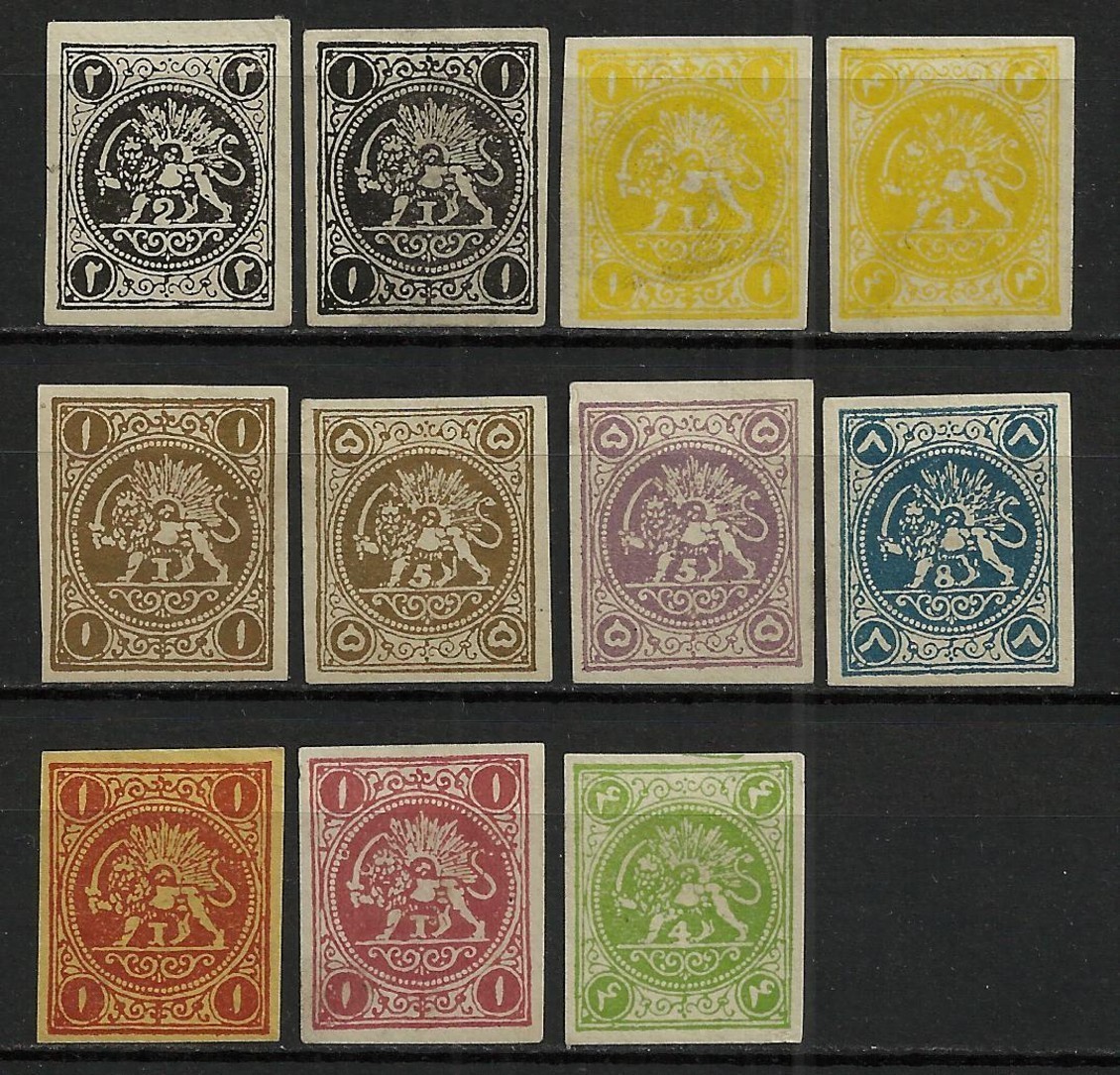
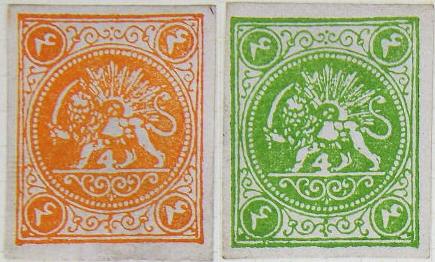
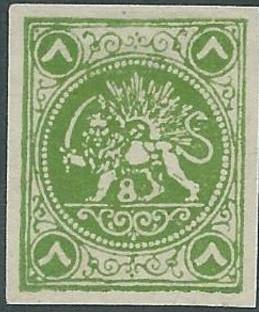
The same set of fakes(?), but now uncancelled. Note the '5' in
the 5 K values. Also note the missing pearl (at about 2 o'clock)
in the 1 K red and 1 K red on yellow stamps (the 1 ch black also
appears to have the same defect). I've seen the 1 K and 5 K
values printed together in a sheetlet of eight 1 K and eight 5 K
stamps (in columns of four stamps).

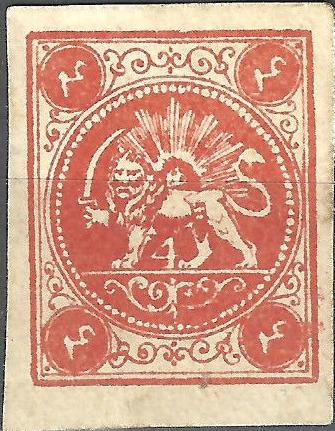
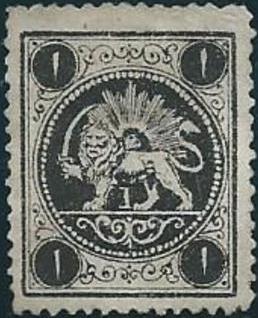
Perforated forgery with 'Gift of Pollitz' handwritten on the
back. Next to it an imperforate forgery apparently made by the
same forger. Also a black 1 ch of the same forger. Note, that the
end of the tail is relatively large.
The forger Sperati made deceptive forgeries of the 2 c green(?) and 2 c blue(?) values. The distinguishing characteristics can be found in the BPA book. For example, there is a white space in the inner frameline next to the upper right Arabic '2'.
Sperati also made a forgery of an unissued 2 ch black stamp.
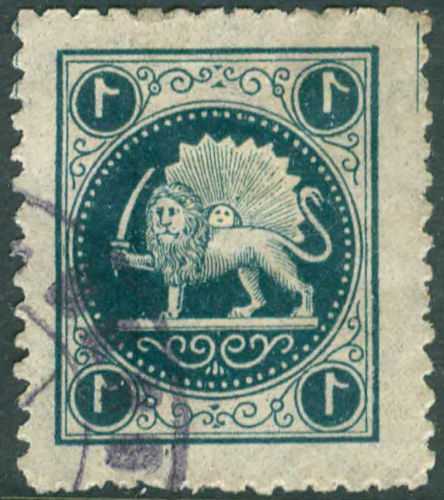
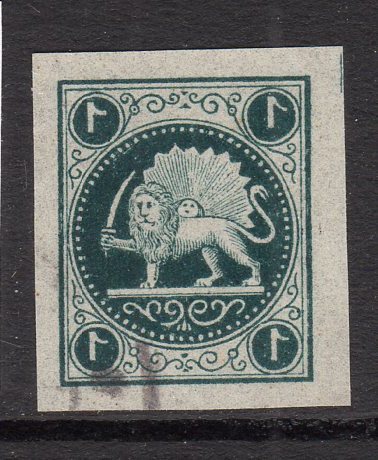
Two stamps in a very different design, probably forgeries.
The book 'Lions of Iran' by Mr. Mehrdad Sadri seems to be quite useful in determining forgeries of these stamps. This book also gives descriptions of essays etc. (I have not read this book myself).
For stamps of Persia issued from 1876 click here.